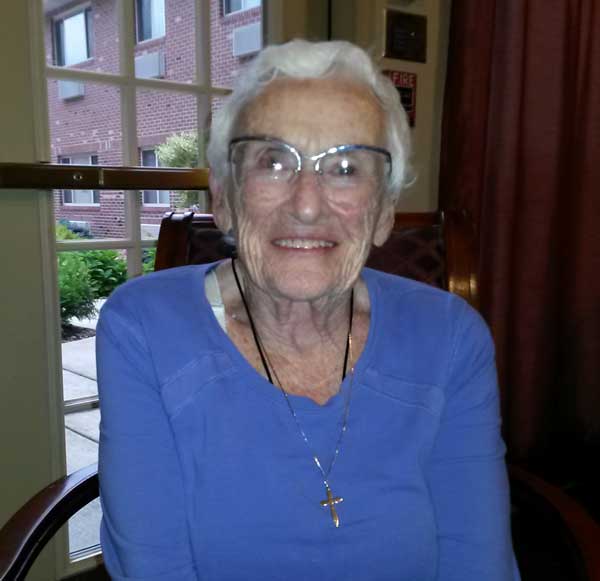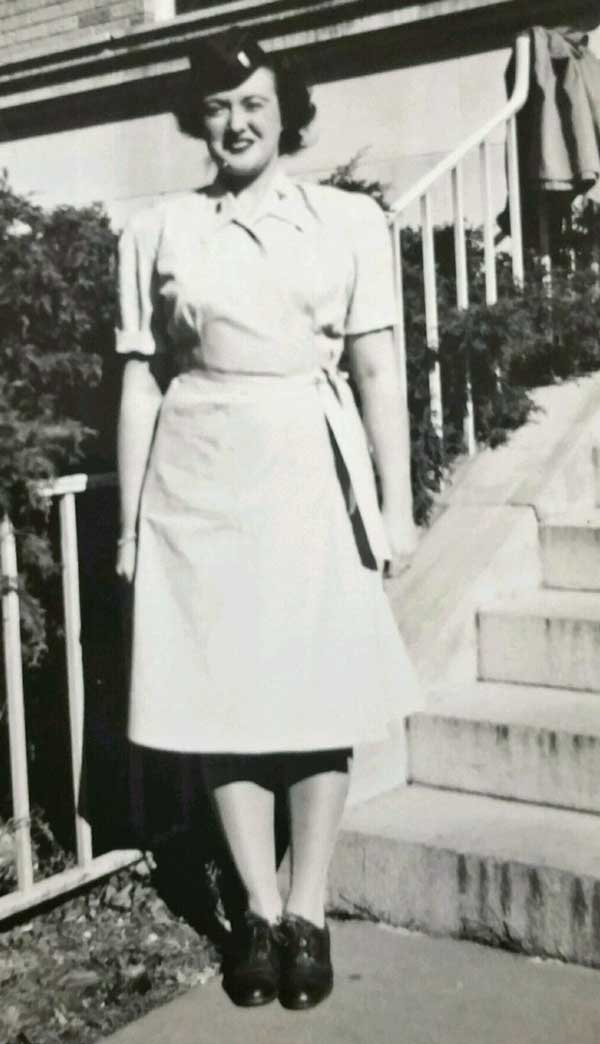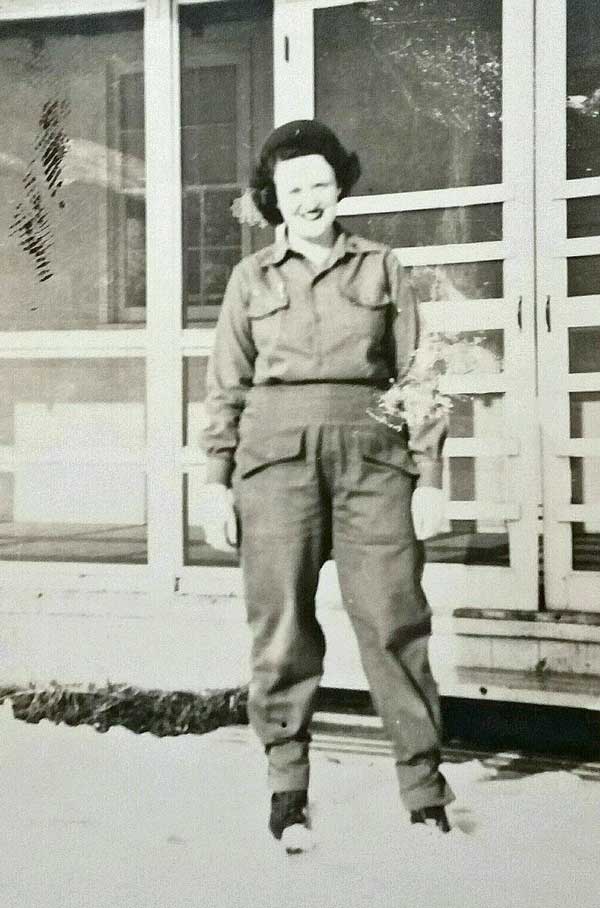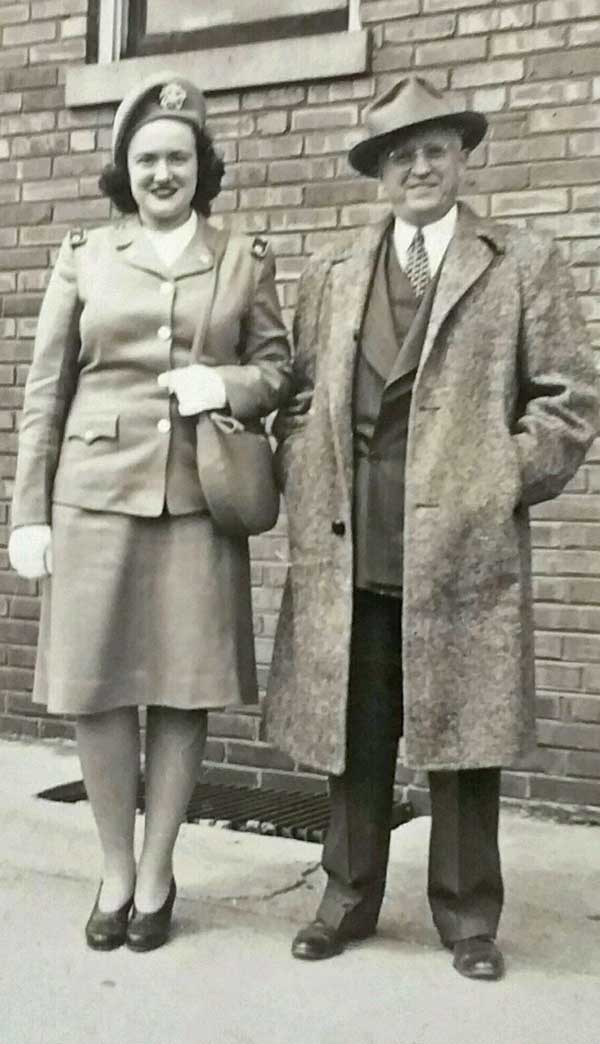U.S. Army / World War II
(Hobart, IN) The U.S. Cadet Nurse Corps — the nation’s first integrated uniformed U.S. service corps —fulfilled an urgent need for nurses at home and abroad during World War II. In search of more nurses, the Cadet Nurse Corps traveled to St. Joseph Hospital in Chicago, where Thelma Finney was a nurse.
At the time, cadet nurses provided 80% of the nursing care in U.S. hospitals. Thelma joined and was part of the Cadet Nurse Corps during her junior and senior years of college.
The Corps promised many things, but Thelma knew she was ready to enlist in the regular Army. Her father had served in WWI, and she was eager to serve her country as well.
In March of 1945, Thelma began her service in the Army Nurse Corps by attending basic training at Ft McCoy in Wisconsin. After basic, she was assigned to her first hospital at Fort Sill, Oklahoma. As a general duty nurse, she administered the new wonder drug penicillin to the men she cared for. At that time, the public did not have access to penicillin; it was only for military personnel. She recalls having to give the men penicillin shots as it was not available orally at the time.
Another memory Thelma shared was how unbearably hot and dry it was in Lawton, Okla., where the base was. With no air conditioning available, the night shift was the only shift that had the advantage of night-cooled air. To make matters worse, every Friday afternoon featured a parade march by all the doctors and nurses. Thelma knew that although these things were annoying to the staff, it did not take away from providing the best possible care to the servicemen.
Most of the men Thelma cared for served in the Pacific campaign and had various illnesses and pains. The servicemen were sometimes given passes to go into town, and the nurses always had a good laugh the next day when the local watering holes would return the crutches and wheelchairs left at their establishments. The men always found a way to get back, even without their oftentimes much needed equipment.
Thelma humbly says that the Corpsmen did the real work, and that her fellow nurses assisted them by taking temperatures, blood pressures and other duties of a general nurse. She recalls that sometimes she worked at the permanent station hospital and other times she was assigned to the various treatment buildings that surrounded the hospital. They were picked up by bus at their sleeping quarters and taken to their work areas or mess halls.
After about six months, Thelma was assigned to the Army and Navy General Hospital in Hot Springs, Ark. Thelma has never been back to Hot Springs, but she remembers it as a beautiful area. She recalls going to mass on Sundays in a large hall that accommodated the nurses and physicians based there.
During the 1940s, the hospital was designated the Army Arthritis Center for the entire Army. It was also the first medical center selected to treat polio. The experience she gained there impacted her life after the service.
Thelma was discharged in 1946 from Fort Sheridan in Chicago. She planned on staying in Chicago, but she was offered a position with the Red Cross in Colorado as a nurse assisting polio treatments. It was there where she met her husband Donald, who had served almost five years in the Army.
When jobs eventually got hard to find in Colorado, they returned to the Midwest, where Donald took a job with the Pennsylvania Railroad. Thelma took a nursing position in the labor and obstetrics department of the Sisters of St. Mary Mercy Hospital. During this time, Thelma and Donald raised their son and four daughters.
Thelma would later work at St. Mary’s Hospital in Hobart, Ind., in the intensive care unit until she retired at the age of 65 in November 1988.
Thelma will celebrate her 93rd birthday a few days after taking her well-deserved Honor Flight.
Enjoy your special day Thelma, and thank you for providing care to our servicemen and for your service as a nurse.






